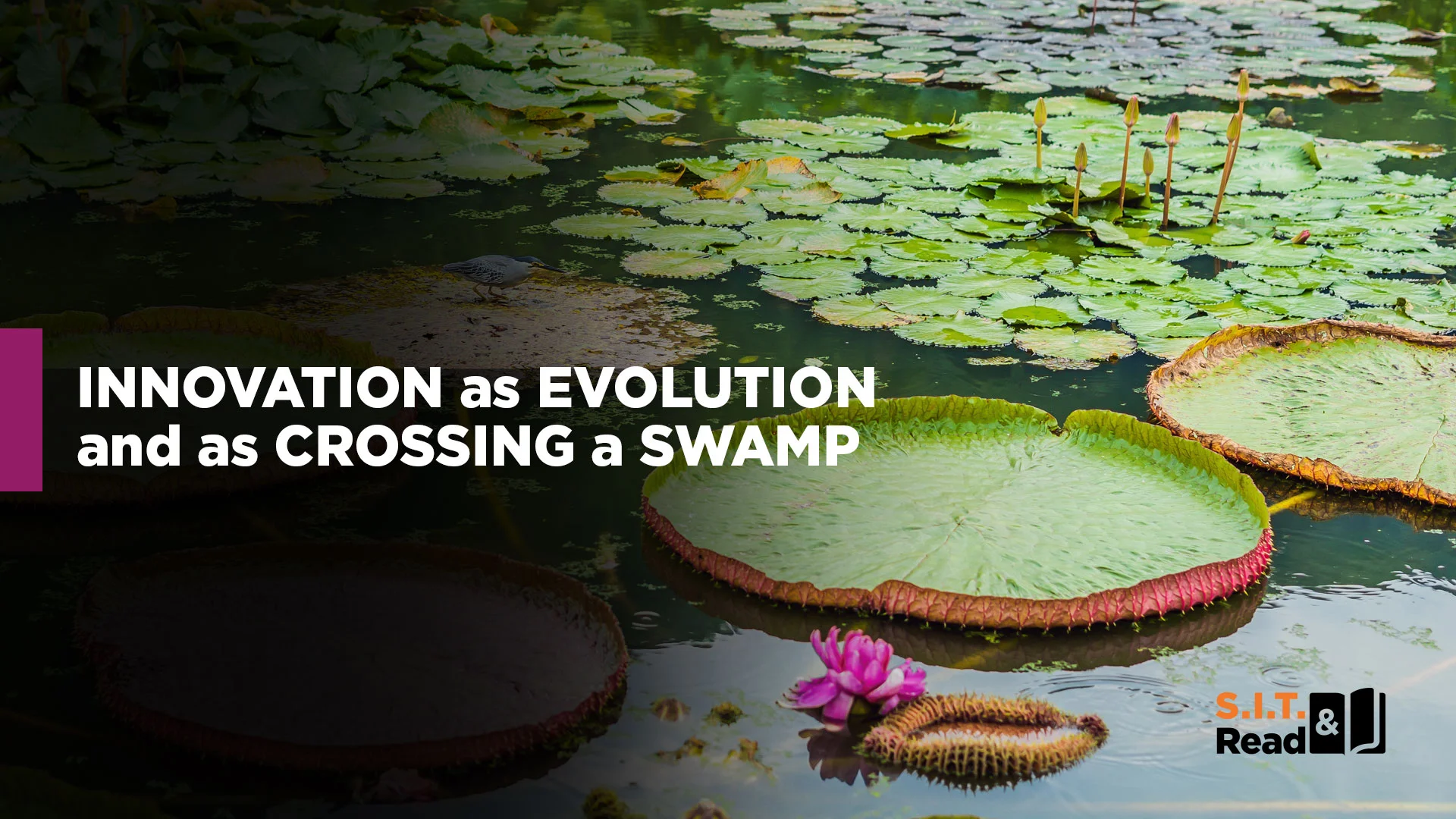(Originally published on December 1st, 2021)
When talking to people about innovation and SIT, whether in casual conversation or as part of a teaching or facilitation scenario, many of us have found that the easiest way to convey what we are about, and the best way to make the (metaphorical…) penny drop, is often by using a metaphor.
The Evolutionary Metaphor
Ideas are like species. There are many of them out there. They struggle for attention and resources, and only the fittest survive. In “idea nature”, random variations of ideas emerge through accident and luck. Some of these variations – the 3M Post It, Penicillin – turn out to be useful and successful while others (the majority) disappear. What SIT does is to create the variations non-randomly. Thus, SIT is about systematic or directed creation of “idea mutations” or “idea variations”. Randomness is thus taken out of the idea evolution process. Some non-obvious advantages:
- SIT variations are created using the 5 patterns. Thus, beyond speeding up the process by proactively creating variations, SIT leads to types of variations that tend to have a higher probability of survival.
- Through the FFF structure, SIT not only speeds up generation of variations, but also accelerates selection, by passing each variant immediately through market and implementation filters.
- As the SIT method evolved (!), additional tools and practices have been incorporated to make sure that those ideas that have been non-randomly selected, get to be packaged to support their survival.
The Firm/Marshy Ground Metaphor
Common wisdom is that when individuals deal with everyday notions and ordinary activities, they are on firm ground, stable and safe, while innovative ideas live in “marshy terrain” and, thus, in order to achieve innovation, one must be willing to leave firm ground and wade through marshes in the hope of reaching undiscovered territory. Due to the buzz around innovation, people push themselves into the marshes but, intuitively, they fear the thought of getting muddy, sinking or not being able to return to the firm ground from which they ventured out.
SIT’s novel claim is that this underlying assumption – that innovation lives in the marshland – is misleading and altogether false. Rather, the innovative idea resides on ground as firm and stable as that on which current thoughts and modes of being exist, and it is merely the path to this innovative idea that requires wading through the marsh.
SIT concedes that, indeed, to achieve innovation one must be willing to wade through these marshes. This wading process may be quite unpleasant and cannot, by any stretch, be considered as primarily entertaining (“we’ll have great fun”). There are, however, two consolations: first, a structured methodology goes a long way in guiding you safely through the marshy ground, and second, once the innovative idea is reached, one finds oneself, again, on firm and stable ground.
